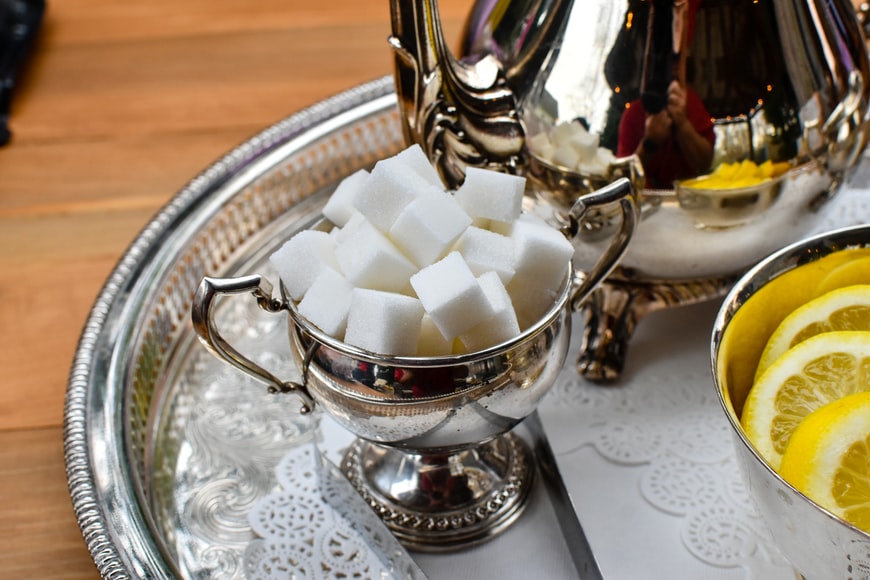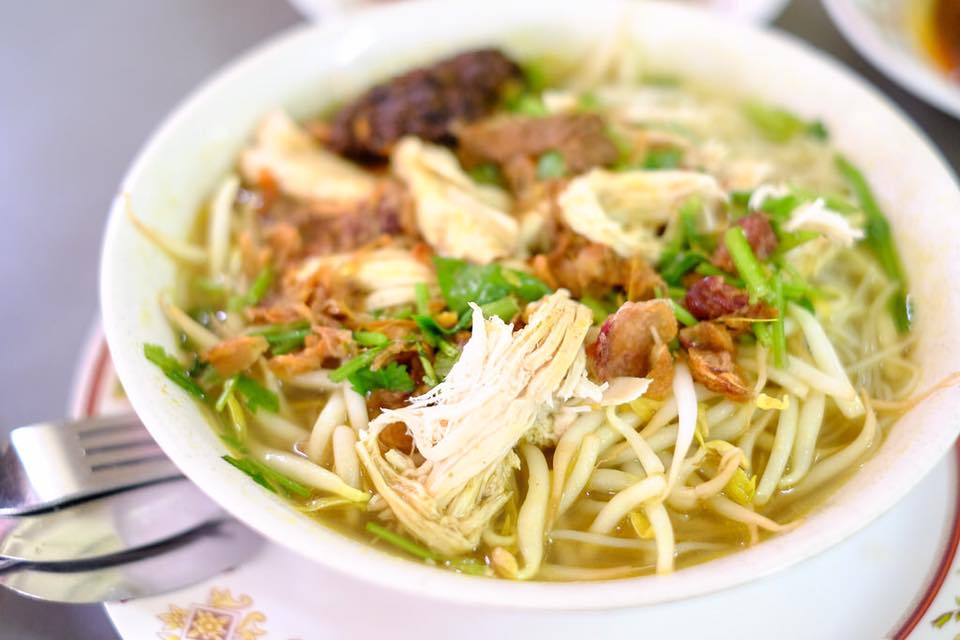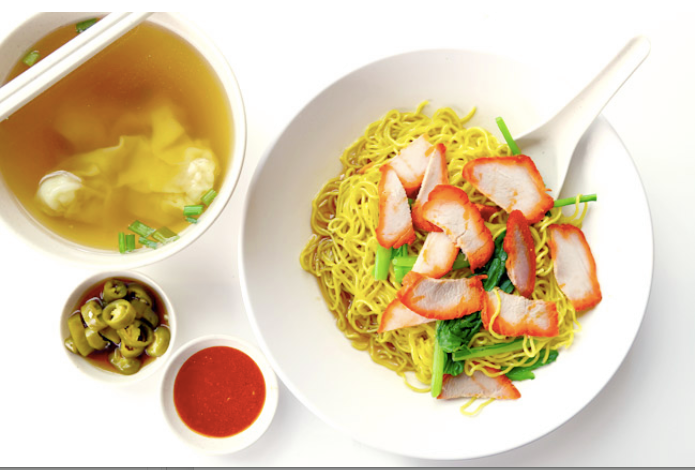Local food to eat and to avoid at hawker centres if you have high blood pressure


When you are at the hawker centre, you would naturally think of gravitating to your favourite dishes. You might want to sink your teeth into that plate of char kway teow or enjoy the crisp into cubes of sweet and salty rojak.
Unfortunately, what you love to eat can be bad for you if you have pre-existing medical conditions. High blood pressure, also known as hypertension, can become worse if you indulge in foods that are high in cholesterol, sugar, and salt.
Around one in four Singaporeans between the ages of 30 to 69 have high blood pressure. Not only is high blood pressure common but it is also a long-term condition that can place pressure on your heart and blood vessels if not managed well.
However, this does not mean that all foods at the hawker centre are off limits. You can still eat out if you make healthier choices for your meals. We will talk about what sorts of foods are bad for people with high blood pressure and why. Below we will also tell you the top five local foods at the hawker centre that you can eat or should avoid if you have high blood pressure.
You are considered to have hypertension if your blood pressure reading is 140/90 mm Hg and above. In the short term high blood pressure can cause mild problems like headaches and shortness of breath, but lead to more serious consequences in the future.
In the long run, the pressure exerted on the arteries and heart can cause problems like kidney failure, stroke, loss of vision and heart failure.
Having a poor diet is one of the major risk factors for high blood pressure. Eating a balanced diet and avoiding foods that have negative effects on your heart health is important to prevent long-term consequences of high blood pressure.
Below we will talk about the kinds of foods you should avoid to keep your blood pressure levels in check:

Drinking large amounts of alcohol has been associated with higher blood pressure, so try to limit the number of alcoholic drinks you consume in a day. The recommended daily maximum intake of alcohol is two drinks a day for men or one drink a day for women.
Taking in a lot of salt causes the body to pass out more water in the form of urine which can worsen existing problems with high blood pressure.

Foods that are high in saturated fat can increase the body’s level of LDL which increases one’s rate of heart disease. Such foods include ghee, palm oil, butter, margarine and lard.
Food cooked with a lot of oil can also contain high levels of cholesterol which clogs the arteries and makes them narrower. This increases the pressure of blood which flows through the arteries and increases your likelihood of having a stroke.

Eating sugar causes the body to produce more of a hormone called insulin, which also causes an increase in blood pressure and heart rate.
If you have type 2 diabetes, eating sugary foods can also cause your blood sugar levels to rise quickly and lead to blurred vision, nausea, shortness of breath.
To control blood pressure, it is essential that you manage your weight as being overweight is associated with high blood pressure. Eating food that is lower in calories and controlling your portion sizes is important to keeping your weight at a healthy level.
Go for food that is high in essential nutrients while being low on sugar, fat and salt. Drinking plenty of fluids is also important to keeping blood pressure manageable.
Some general food options to go for on a high blood pressure diet include:
Every individual is different, and your loved one has care needs that are unique. Engaging a caregiver for your loved one not only encourages interaction; it also helps build a strong emotional support.
To give your loved one the best care he/she deserves, we provide a free care consultation to ensure that they get a Care Professional that best suits their needs.
With these general guidelines, let’s look at which foods are good to eat or should be avoided for someone with high blood pressure:

Mee soto is a noodle dish originating from the Madurese ethnic group from the island of Madura in northeastern Java. Thick yellow noodles are served with shredded chicken in a soup made of chicken broth mixed with spices.
The dish can be garnished with fried shallots, sliced hard-boiled eggs and spring onions. Mee soto is low in cholesterol and one bowl contains just 434 calories, making it a healthy choice that can also prevent you from gaining weight.
Sometimes mee soto is served with begedil, a fried potato cake. Skip out on the begedil to avoid extra fat, salt and caloric intake.
Thosai is a savoury thin pancake made of a flour containing lentils and rice that is rolled up and served on a metal platter with vegetable stew, curries and chutneys. This dish is a good source of protein for vegetarians as it does not contain any meat and the lentils used in the accompanying curries are high in protein.
The dish is low in fat, making it one of the healthier breakfast choices you can find in the hawker centre. If your thosai is served with coconut chutney, try replacing it with a lower-fat alternative like dhal.
A bowl of rice porridge served with several steamed or stir-fried side dishes characterises the distinctly Teochew style of eating porridge. Rice porridge, also known as congee, contains less calories and carbohydrates per serving than steamed white rice.
100g of rice porridge contains 6.5 calories and 7.5g of carbohydrates compared to 140 calories and 31g of carbohydrates in white rice. Teochew porridge is not usually heavily seasoned, making it lower in salt and fat than other types of porridge dishes at the hawker centre.
Some healthy side dishes that you can have with your Teochew porridge include whole steamed fish, stir-fried broccoli and braised beancurd ( tau kwa ). You can order side dishes that include lots of vegetables for added fibre.
On the other hand, try to avoid side dishes that are heavily coated in sauce, like braised duck, or dishes that use a lot of preserved ingredients like preserved radish or dried shrimp as those tend to be higher in salt.

The “wonton” in wonton noodles is the Cantonese name for minced pork or prawn dumplings wrapped in a translucent dough skin. The wontons are served with springy thin yellow noodles and kai lan, and the dish can be eaten either dry or with soup.
As the wontons are not fried they contain less oil and also less cholesterol. Wonton noodle soup might contain a lot of MSG, so try to drink the soup sparingly.
This Hakka dish consists of rice and noodles accompanied by a variety of boiled ingredients. Many stalls offer a dazzling array of choices including vegetables stuffed with fish meat ranging from red peppers to eggplant, thin folds of beancurd skin, and fish balls. You can also choose to eat your ingredients with a clear vegetable-based soup.
Yong tau foo is one of the healthiest local foods you can find at a hawker centre because it uses little seasoning and is low on salt, sugar and cholesterol. You can also tailor your meal to your liking by choosing the ingredients you like.
Avoid choosing fried foods and stick to ingredients that are boiled or steamed. Avoid dipping your yong tau foo ingredients in sweet sauce to reduce your sugar intake and ensure a healthier meal.

Curry chicken noodles contain thick yellow noodles and pieces of boiled chicken and a hard-boiled egg in a spicy soup made of curry with a coconut milk base. This dish is unfortunately low in nutrients and high in fat and calories.
One serving of curry chicken noodles contains 695 calories and 44.8g of fat and few nutrients beyond the protein provided by the chicken. If you want to eat noodles at the hawker centre, try other noodle dishes like mushroom minced pork noodles as they contain more nutrients per serving.
Also known as chai tow kway, fried carrot cake consists of radish stir-fried with a batter made from rice flour, garlic, eggs and preserved radish known as chai poh.
Fried carrot cake can be served “black” with dark sauce or “white” without, but regardless of how you have your carrot cake it is high in calories. Fried carrot cake is also high in salt, cholesterol and fat and low in nutrients.

Murtabak refers to a crispy fried dough pancake filled with minced meat like chicken or mutton and accompanied by curry sauce. Murtabak is fried with large amounts of oil which is high in saturated fat that can increase your levels of LDL and thus of heart disease and stroke.

Nasi lemak might be a popular local breakfast option but it’s especially unhealthy for people with high blood pressure as the rice in nasi lemak is cooked with lots of coconut milk. Coconut milk is high in saturated fats which can raise the body’s amount of LDL or “bad” cholesterol.
Even low-fat versions of coconut milk contain a lot of fats, at 10g of saturated fat per 100g compared to 2.3g per 100g of cow’s milk. Furthermore, nasi lemak is usually served with fried side dishes like fried eggs, fried mackerel and ikan bilis (deep-fried anchovies), all of which can be high in cholesterol and salt.
The oysters in oyster omelette contain some nutrients as they are high in iron and vitamin A. Nonetheless, most of the dish consists of starchy rice flour batter and eggs which are low in nutrients apart from protein.
Oyster omelette is high in calories and fat – one serving contains 645 calories and 49.3g of fat. If you are eating oyster omelette you can share it with a friend to reduce the amount of calories and salt you are taking in.
So many of our favourite local delights can be deceptively bad for our health! It can be confusing knowing which local foods are suitable to eat on a high blood pressure diet and which should be avoided.
This article was first published in Homage.